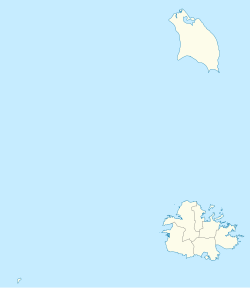History
The idea that the village's name came about as a result of the abolition of slavery is one of the mystiques connected to that neighborhood. Freeman's Village was first called "Francibell." The welcome sign also includes this information. (In Sir Keithlyn Smith's book, "To Shot Hard Labor," the version "Franchie Bell" can be found on page 54. [1]
It is also claimed that following liberation, some former slaves relocated to that region and each of the men started announcing, "Today, I am a free man," with pride. As a result, the place was given the name Freeman's Village. [1]
Documents kept at the Antigua Museum reveal that Free-Estate man's existed before slavery was abolished in 1834. Marmaduke Robinson was handed 360 acres of Arthur Freeman's estate in 1779. Robinson may have been given management or rental rights to the plantation by the Free- men, who were absentee landlords. [1]
Free communities began to spring up in remote areas, such as the south-western hills of Antigua, after emancipation, which eventually occurred on Friday, August 1, 1834 (when 29,000 Antiguan slaves were set free). Since Antigua was the only island in the Leeward Islands to skip the four-year apprenticeship requirement recommended by Britain, Antiguan slaves were the first to be freed in the British West Indies. [1]
As in Liberta, some planters sold their laborers land plots. Numerous towns have names that have "freedom" connotations; examples include Freetown, Freemansville, and Liberta. [1]
This fact supports the claim that the initial settlers' sense of pride led to the creation of the name "Freemansville." Others may dare to assert that it was only a coincidence that the former proprietors of the nearby plantation "Freeman's Estate" and their neighboring community "Freemansville" shared a significant portion of their names. [1]
Inigo Thomas, a member of parliament and absentee slave owner, was given compensation together with his brother-in-law for the Lower Freeman's estate in 1852. He also claimed the Winthorpes Estate (#56) and the Galley Bay Estate (#30) as tenants-for-life. Inigo's son, Freeman Thomas, received payment for these two lands. The son, who was given the Thomas family's English estates at Ralton, in Willington, and Yapton, in West Sussex, changed his name from Inigo Freeman to Thomas in 1789. [1] [2]
It should be mentioned that in that area of the island, there were four estates that were near to one another. Naturally, these were all sugar plantations. Freeman's Village was surrounded by Bellevue to the west, Freeman's on the northern side, Sanderson's on the eastern side, and Jonas on the southern-eastern side. After being freed from slavery, it is known that the former slaves continued to labor on the plantations. [1]
The plantation owners, who were unaccustomed to working with a labor force of liberated men and women, tried all in their power to sabotage the former slaves' ascent to independence. The employees were mistreated just as cruelly as before. [1]
Also, it is claimed that the settlement was one of the first in this nation to be founded by freed slaves. It has been demonstrated that this assertion is accurate. [1]
Freemansville became the second village to be formed in Antigua after the abolition of slavery in 1834. "Francibell" or "Franchie Bell" was its original name. Its name was eventually modified. Freemansville had 12 homes and a Methodist church in 1890. [1]
There were about 30 communities in Antigua by 1840. Because the planters did not want to develop housing on the estates because the laborers did not want to live there following the catastrophic earthquake of 1843, these settlements flourished quickly. They want independence from the planters so that they could better bargain for their pay. [1]
Around this period, camels were introduced by plantation owner Freeman to work on his estate. As a source of food, date palms (phoenix reclinata) were transported with these animals. The camels found Antigua to be considerably more humid than the deserts of Africa, and many died from foot problems. The reason there are so many date palms in the area is because they survived. Nevertheless, due to the climate in Antigua, the palms do not produce the familiar, luscious and fleshy dates. [3] [1]
Freeman's Village, as stated on the greeting sign posted at the eastern entrance to the community, calls itself "The most distinctive settlement in Antigua and possibly the world." The sign-board that reads, "Freeman's Village has produced five (5) centenarians, two of whom are a father and his son," also explains the basis for this outrageous claim. [1]
